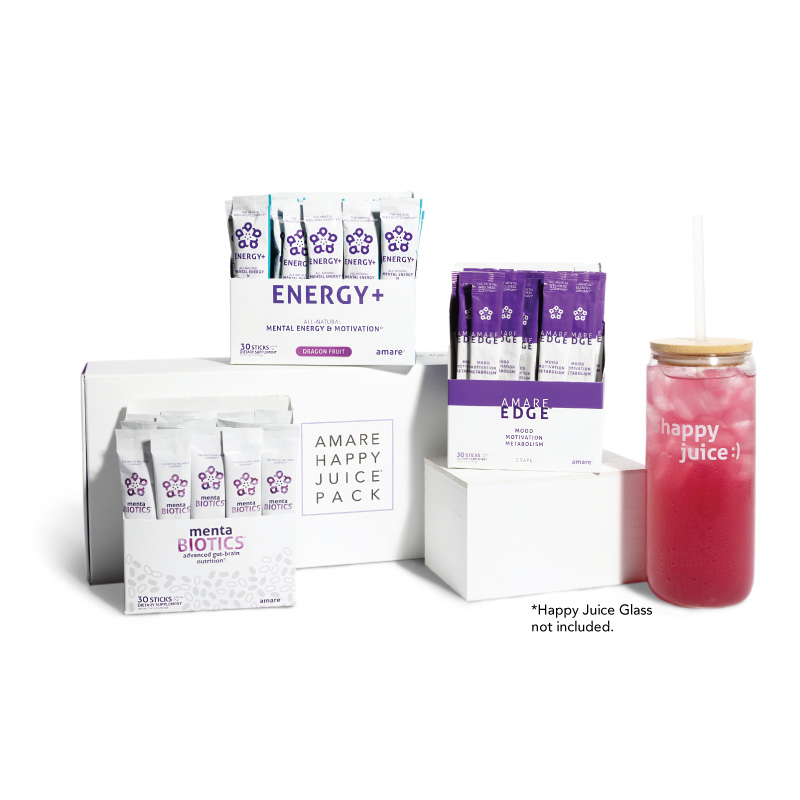Listen on: Apple Podcasts | Spotify
Do you sometimes feel down and wish you could boost your mood? You’re not alone. Many people are looking for ways to feel better, mentally and physically. That’s where “hope molecules” come in. While it’s not a term scientists use, it helps us discuss some special brain chemicals. These chemicals, like endorphins and dopamine, have a big say in how you feel each day.
What if you could understand these brain chemicals better? What if you knew how to get more of these feel-good molecules naturally? Scientists have been looking into these questions for years.1Kringelbach, M. L., & Berridge, K. C. (2017). Pleasure, happiness, and the brain. Oxford Handbook of Philosophy of Emotion, 4, 329-344.,2Rothman, R. B., Baumann, M. H., Dersch, C. M., Romero, D. V., Rice, K. C., Carroll, F. I., & Partilla, J. S. (2019). How stimulants affect the brain. Synapse, 39(1), 32-41.
In this article, we’ll talk about these special chemicals one by one. We’ll discuss what Hope Molecules do, why you might not have enough of them, and how you can get more through what you eat, exercise, and supplement your diet. We’ll also cover lifestyle factors that influence them the most. All of this is based on real science to help you take steps to feel better.
- What are “Hope Molecules”?
- Endorphins: The Uplifting Hope Molecule
- Dopamine: The Reward Hope Molecule
- Serotonin: The Mood Regulator
- Oxytocin: The Love Hormone
- Brain-Derived Neurotrophic Factor (BDNF): The Memory Molecule
- The Integrated Approach to Optimizing Hope Molecules
- Conclusion: Your Personal Blueprint for a Life Filled with Hope
What are “Hope Molecules”?
The term “hope molecules” is a memorable way to discuss a group of critical neurotransmitters in our brain. Based on how they work, you’ll find that the term “Hope Molecule” is an appropriate term to describe them.
These are the biochemical messengers that significantly influence our emotions and overall well-being. When you’re feeling good, chances are your levels of these particular molecules are balanced. On the flip side, imbalances can lead to feelings of stress, unhappiness, or even physical discomfort.
The key players in this biochemical dance are:
- Endorphins: Often referred to as natural painkillers, endorphins elevate your mood and can even produce a sense of euphoria.
- Dopamine: This neurotransmitter acts like a reward system for your brain, providing feelings of pleasure and satisfaction.
- Oxytocin: Commonly known as the “love hormone,” oxytocin strengthens social bonds and enhances feelings of trust and empathy.
- Serotonin: This molecule contributes to your sense of happiness and well-being, and it also plays a role in regulating your sleep and appetite.
- Brain-Derived Neurotrophic Factor (BDNF): This unique molecule supports the health of your brain cells and improves cognitive functions like learning and memory.
In the following sections, we’ll delve into each of these neurotransmitters in detail. We’ll explore their roles, why you might be lacking in them, and how to naturally boost their levels through lifestyle choices like diet and exercise. And rest assured, every point is supported by credible scientific research to guide you in making informed decisions.3Gold, P. E. (2015). The role of acetylcholine in learning and memory. Neurobiology of Learning and Memory, 104, 3-10.,4Southwick, S. M., Bonanno, G. A., Masten, A. S., Panter-Brick, C., & Yehuda, R. (2018). What is resilience? European Journal of Psychotraumatology, 5(1), 25338.
Endorphins: The Uplifting Hope Molecule
Endorphins are the first of the Hope Molecules we’ll look at. They are primarily produced in the pituitary gland and released into the bloodstream during moments of stress and pain. They act on the opiate receptors in your brain, much like morphine or other prescription painkillers, but without the addictive qualities.5Akil, H., Watson, S. J., Young, E., Lewis, M. E., Khachaturian, H., & Walker, J. M. (1984). Endogenous opioids: biology and function. Annual Review of Neuroscience, 7(1), 223-255. Their primary role is to inhibit the transmission of pain signals and promote a sense of euphoria.
Causes of Endorphin Deficiency
Chronic Stress: When stress becomes a long-term companion, your body prioritizes releasing stress hormones like cortisol over mood-enhancing hormones like endorphins. This shift in hormonal balance affects the opiate receptors, diminishing their sensitivity over time.6Russo, S. J., Murrough, J. W., Han, M. H., Charney, D. S., & Nestler, E. J. (2012). Neurobiology of resilience. Nature Neuroscience, 15(11), 1475-1484.
Poor Nutrition: A lack of essential nutrients, particularly essential amino acids, can impede the synthesis of endorphins. This can lead to decreased levels and a heightened perception of pain.7Kanarek, R. B., Marks-Kaufman, R., D’Anci, K. E., & Przypek, J. (1997). Nutrition and behavior: a multidisciplinary approach. Chapman & Hall.
Sedentary Lifestyle: A sedentary lifestyle results in lower endorphin production because physical stress is one of the primary triggers for endorphin release.8Koltyn, K. F. (2000). Analgesia following exercise: A review. Sports Medicine, 29(2), 85-98. The reality is, you can sit yourself into depression. And when you get depressed, you feel more compelled to sit, which often leads people into a never-ending downward spiral. Unless they force themselves to exercise, that is.
How to Boost Endorphins Naturally
Exercise and the “Runner’s High”: The famous “runner’s high” is attributed to elevated endorphin levels during aerobic exercise. Endorphins are released in response to the physical stress and discomfort associated with intense exercise, acting as a natural painkiller.9Boecker, H., Sprenger, T., Spilker, M. E., Henriksen, G., Koppenhoefer, M., Wagner, K. J., … & Tolle, T. R. (2008). The runner’s high: opioidergic mechanisms in the human brain. Cerebral Cortex, 18(11), 2523-2531. Does that mean you need to start running? Not at all. I rarely recommend running to my clients. Other forms of intense exercise can also boost endorphin levels. But, you do need to exercise at an intensity that triggers a stress response. So, a casual walk through the neighborhood or doing the same resistance training workout with the same weight for the same number of reps you’ve done in the past won’t stimulate endorphin release. You must push yourself harder than you have in the past. If you have a hard time doing that, I strongly recommend following a professionally designed, periodized program like VIGOR Training.
Dietary Interventions: Foods rich in protein, specifically those containing the amino acid tyrosine, contribute to endorphin production. Tyrosine is a precursor for endorphins, meaning it’s one of the building blocks your body uses to make this neurotransmitter.10Jongkees, B. J., Hommel, B., Kühn, S., & Colzato, L. S. (2015). Effect of tyrosine supplementation on clinical and healthy populations under stress or cognitive demands—A review. Journal of Psychiatric Research, 70, 50-57. Not surprisingly, a vegan diet is usually low in tyrosine.
Social Connection and Laughter: Engaging in social activities and laughter stimulates endorphin release by activating your emotional and sensory circuits, reinforcing social bonds, and alleviating stress.11Dunbar, R. I., Baron, R., Frangou, A., Pearce, E., van Leeuwen, E. J., Stow, J., … & van Vugt, M. (2012). Social laughter is correlated with an elevated pain threshold. Proceedings of the Royal Society B: Biological Sciences, 279(1731), 1161-1167.
Supplements to Boost Endorphins: While adopting lifestyle changes like regular exercise and a balanced diet is always best, supplements can offer additional support. However, consult with a healthcare provider before starting any supplementation regimen, especially if you take any medications. Here are some supplements with promising evidence:
- DL-Phenylalanine (DLPA): This amino acid supplement is an endorphin precursor. It’s been shown to increase endorphin levels and is often used for its analgesic and antidepressant properties.12Baratloo, A., Rouhipour, A., Forouzanfar, M. M., Safari, S., Amiri, M., & Negida, A. (2016). The Role of Caffeine in Pain Management: A Brief Literature Review. Anesthesiology and Pain Medicine, 6(3), e33193.
- St. John’s Wort: Though primarily known for its serotonin-boosting effects, there’s evidence to suggest it also influences endorphin levels.13Müller, W. E., Rolli, M., Schäfer, C., & Hafner, U. (1998). Effects of hypericum extract (LI 160) in biochemical models of antidepressant activity. Pharmacopsychiatry, 31(Supplement 1), 22-29.
- Omega-3 Fatty Acids: A staple for overall brain health, Omega-3s have been linked to increased endorphin levels, offering both mood-enhancing and anti-inflammatory effects.14Delarue, J., Matzinger, O., Binnert, C., Schneiter, P., Chiolero, R., & Tappy, L. (2003). Fish oil prevents the adrenal activation elicited by mental stress in healthy men. Diabetes & Metabolism, 29(3), 289-295.
- Ginseng: Long used in traditional medicine, Ginseng is believed to have the ability to increase endorphin production, although more research is needed for a conclusive stance.15Kim, H. G., Cho, J. H., Yoo, S. R., Lee, J. S., Han, J. M., Lee, N. H., … & Son, C. G. (2013). Antifatigue effects of Panax ginseng CA Meyer: a randomised, double-blind, placebo-controlled trial. PloS One, 8(4), e61271.
Dopamine: The Reward Hope Molecule
Dopamine acts as a messenger between brain cells and plays a critical role in how we feel pleasure and reward. It’s released during pleasurable situations, motivating you to seek out the pleasurable activity or occupation again.16Schultz, W. (2015). Neuronal Reward and Decision Signals: From Theories to Data. Physiological Reviews, 95(3), 853–951.
This isn’t always a good thing, as it’s the root of addictive behavior. For example, video games are designed to trigger dopamine release, which leads to grown men into wasting their lives on a couch in front of a computer, television, or wearing augmented-reality glasses. In the “real world,” though, dopamine helps us seek out many good behaviors.
A healthy dopamine level can make you more focused, motivated, and happy.
Causes of Dopamine Deficiency
Chronic Stress: Just like with endorphins, chronic stress can lower dopamine levels by exhausting the adrenal glands and skewing the hormonal balance.17Sapolsky, R. M. (2004). Why zebras don’t get ulcers. Holt Paperbacks.
Poor Diet: Diets high in sugar and saturated fats can deplete dopamine. These foods provide quick spikes of pleasure but are followed by a crash, causing a vicious cycle of dopamine depletion.18Johnson, P. M., & Kenny, P. J. (2010). Dopamine D2 receptors in addiction-like reward dysfunction and compulsive eating in obese rats. Nature Neuroscience, 13(5), 635-641.
Lack of Physical Activity: Exercise is a potent inducer of dopamine release. Lack of physical activity can thus contribute to lower dopamine levels.19Zald, D. H., Boileau, I., El-Dearedy, W., Gunn, R., McGlone, F., Dichter, G. S., & Dagher, A. (2002). Dopamine transmission in the human striatum during monetary reward tasks. The Journal of Neuroscience, 22(7), 2708-2716.
Sleep Debt: Lack of sleep reduces the sensitivity of dopamine receptors, making you less responsive to positive stimuli. This could create an environment where it’s challenging to feel pleasure and motivation.20Volkow, N. D., Tomasi, D., Wang, G. J., Telang, F., Fowler, J. S., Logan, J., … & Wang, R. L. (2012). Evidence That Sleep Deprivation Downregulates Dopamine D2R in Ventral Striatum in the Human Brain. Journal of Neuroscience, 32(19), 6711-6717.
How to Boost Dopamine Naturally
- Physical Exercise: Activities like running, swimming, or even walking have been proven to stimulate dopamine release and receptors in the brain.
- Proper Nutrition: Foods rich in tyrosine, the precursor to dopamine, can help. These include bananas, avocados, and nuts.21Fernstrom, J. D., & Fernstrom, M. H. (2007). Tyrosine, phenylalanine, and catecholamine synthesis and function in the brain. The Journal of Nutrition, 137(6), 1539S-1547S.
- Mindfulness and Meditation: Practices such as mindfulness and meditation have been shown to increase dopamine levels, thus improving focus and concentration.22Kjaer, T. W., Bertelsen, C., Piccini, P., Brooks, D., Alving, J., & Lou, H. C. (2002). Increased dopamine tone during meditation-induced change of consciousness. Brain Research Cognitive Brain Research, 13(2), 255-259.
Supplements to Boost Dopamine
- L-Tyrosine: This amino acid is a direct precursor to dopamine, and its supplementation has been shown to improve mood and cognitive performance.23Jongkees, B. J., Hommel, B., Kühn, S., & Colzato, L. S. (2015). Effect of tyrosine supplementation on clinical and healthy populations under stress or cognitive demands—A review. Journal of Psychiatric Research, 70, 50-57.
- Mucuna Pruriens: This plant source contains levodopa (L-DOPA), which is converted to dopamine in the body.24Katzenschlager, R., Evans, A., Manson, A., Patsalos, P. N., Ratnaraj, N., Watt, H., … & Lees, A. J. (2004). Mucuna pruriens in Parkinson’s disease: a double-blind clinical and pharmacological study. Journal of Neurology, Neurosurgery & Psychiatry, 75(12), 1672-1677.
- Rhodiola Rosea: Known for its adaptogenic properties, Rhodiola has been shown to support dopamine production indirectly by reducing stress.25Panossian, A., Hovhannisyan, A., Abrahamian, H., Gabrielyan, E., & Wikman, G. (2010). Pharmacokinetic and pharmacodynamic study of interaction of Rhodiola rosea SHR-5 extract with warfarin and theophylline in rats. Phytotherapy Research, 24(3), 351-357.
- Curcumin: The active ingredient in turmeric, curcumin, has been shown to increase dopamine levels in animal studies.26Kulkarni, S. K., Bhutani, M. K., & Bishnoi, M. (2008). Antidepressant activity of curcumin: involvement of serotonin and dopamine system. Psychopharmacology, 201(3), 435-442.
Serotonin: The Mood Regulator
The third Hope Molecule is serotonin. Serotonin is a neurotransmitter that’s primarily found in the brain, intestines, and blood platelets. It regulates mood, emotion, sleep, and even digestion. High levels are associated with feelings of well-being and happiness, while low levels are linked with depression and anxiety.27Owens, M. J., & Nemeroff, C. B. (1994). Role of serotonin in the pathophysiology of depression: focus on the serotonin transporter. Clinical Chemistry, 40(2), 288-295.
Causes of Serotonin Deficiency
Chronic Stress: Stress reduces serotonin receptor sensitivity, making you less responsive to whatever serotonin you do produce.28Sapolsky, R. M. (2004). Why zebras don’t get ulcers. Holt Paperbacks.
Poor Nutrition: Lack of adequate nutrients like tryptophan, the precursor of serotonin, can lead to lowered serotonin levels.29Markus, R., Panhuysen, G., Tuiten, A., Koppeschaar, H., Fekkes, D., & Peters, M. L. (2000). Does carbohydrate-rich, protein-poor food prevent a deterioration of mood and cognitive performance of stress-prone subjects when subjected to a stressful task? Appetite, 35(1), 49-55.
Lack of Sunlight: Exposure to sunlight helps in the production of serotonin; lack of it, especially during winter months, can result in Seasonal Affective Disorder.30Lambert, G. W., Reid, C., Kaye, D. M., Jennings, G. L., & Esler, M. D. (2002). Effect of sunlight and season on serotonin turnover in the brain. The Lancet, 360(9348), 1840-1842.
Lack of Sleep: Serotonin levels are also affected by sleep. The REM stage of sleep is a critical period for serotonin production. Poor sleep or sleep debt can decrease serotonin levels, impacting mood, appetite, and overall well-being.31Davies, S. K., Ang, J. E., Revell, V. L., Holmes, B., Mann, A., Robertson, F. P., … & Skene, D. J. (2014). Effect of Sleep Deprivation on the Human Metabolome. Proceedings of the National Academy of Sciences, 111(29), 10761-10766.
How to Boost Serotonin Naturally
- Dietary Changes: Foods rich in tryptophan, such as turkey, eggs, and cheese, can help increase serotonin levels.32Young, S. N. (2007). How to increase serotonin in the human brain without drugs. Journal of Psychiatry & Neuroscience, 32(6), 394.
- Physical Activity: Aerobic exercise, in particular, is effective in boosting serotonin. However, anytime I mention aerobic exercise, I need to emphasize that it shouldn’t take the place of resistance training. Resistance training is much more important for overall health for almost everyone (one exception being women with PCOS).
- Positive Social Interactions: Quality social interactions can also stimulate serotonin production.33Uvnäs-Moberg, K., Bruzelius, G., Alster, P., & Lundeberg, T. (1994). The antinociceptive effect of non-noxious sensory stimulation is mediated partly through oxytocinergic mechanisms. Acta Physiologica Scandinavica, 152(3), 271-277. The more isolated we become, the lower our serotonin levels get.
Supplements to Boost Serotonin
- 5-HTP: This is a direct precursor to serotonin and is often used to treat depression symptoms.34Birdsall, T. C. (1998). 5-Hydroxytryptophan: a clinically-effective serotonin precursor. Alternative Medicine Review, 3(4), 271-280.
- SAM-e: S-Adenosyl methionine has been shown to increase serotonin levels and is used as an antidepressant.35Bottiglieri, T., Laundy, M., Crellin, R., Toone, B. K., Carney, M. W., & Reynolds, E. H. (2000). Homocysteine, folate, methylation, and monoamine metabolism in depression. Journal of Neurology, Neurosurgery & Psychiatry, 69(2), 228-232.
- Vitamin D: This vitamin enhances the conversion of tryptophan to serotonin, especially during months when sunlight is scarce.36Patrick, R. P., & Ames, B. N. (2015). Vitamin D hormone regulates serotonin synthesis. Part 1: relevance for autism. The FASEB Journal, 29(6), 2207-2222.
- Probiotics: Gut health and brain health are closely linked, and some strains of probiotics have been shown to produce serotonin.37O’Mahony, S. M., Clarke, G., Borre, Y. E., Dinan, T. G., & Cryan, J. F. (2015). Serotonin, tryptophan metabolism and the brain-gut-microbiome axis. Behavioural Brain Research, 277, 32-48.
Oxytocin: The Love Hormone
Oxytocin is produced in the hypothalamus and secreted by the pituitary gland. This hormone plays a crucial role in social bonding, sexual reproduction, childbirth, and the period after childbirth. Oxytocin not only promotes feelings of love and connection, but it also contributes to relaxation and psychological stability.38Uvnäs-Moberg, K., Handlin, L., & Petersson, M. (2019). Self-soothing behaviors with particular reference to oxytocin release induced by non-noxious sensory stimulation. Frontiers in Psychology, 9, 1529. Hence, it makes sense that it’s one of the Hope Molecules.
Causes of Oxytocin Deficiency
Social Isolation: Lack of social interaction can reduce oxytocin levels, causing feelings of loneliness and increasing stress levels.39Cacioppo, S., Capitanio, J. P., & Cacioppo, J. T. (2015). Toward a neurology of loneliness. Psychological Bulletin, 140(6), 1464.
Emotional Trauma: Experiences that lead to distrust or fear can disrupt oxytocin release.40Heim, C., Young, L. J., Newport, D. J., Mletzko, T., Miller, A. H., & Nemeroff, C. B. (2009). Lower CSF oxytocin concentrations in women with a history of childhood abuse. Molecular Psychiatry, 14(10), 954-958.
Micronutrient Deficiencies: Low levels of essential nutrients like magnesium can also interfere with oxytocin production.41Sartori, S. B., Whittle, N., Hetzenauer, A., & Singewald, N. (2012). Magnesium deficiency induces anxiety and HPA axis dysregulation: Modulation by therapeutic drug treatment. Neuropharmacology, 62(1), 304-312.
How to Boost Oxytocin Naturally
- Physical Touch: Hugs, kisses, and simple touches can significantly increase oxytocin levels.42Holt-Lunstad, J., Birmingham, W. A., & Light, K. C. (2008). Influence of a “warm touch” support enhancement intervention among married couples on ambulatory blood pressure, oxytocin, alpha amylase, and cortisol. Psychosomatic Medicine, 70(9), 976-985.
- Social Interactions: Quality time with loved ones or pets can boost oxytocin.43Beetz, A., Uvnäs-Moberg, K., Julius, H., & Kotrschal, K. (2012). Psychosocial and psychophysiological effects of human-animal interactions: The possible role of oxytocin. Frontiers in Psychology, 3, 234.
- Meditation and Breathing Exercises: Mindfulness practices have been shown to increase oxytocin levels.44Matthiesen, A. S., Ransjö‐Arvidson, A. B., Nissen, E., & Uvnäs‐Moberg, K. (2001). Postpartum maternal oxytocin release by newborns: Effects of infant hand massage and sucking. Birth, 28(1), 13-19.
Supplements to Boost Oxytocin
- Magnesium: As a cofactor, magnesium is crucial for releasing oxytocin.
- Vitamin D: It enhances the effectiveness of oxytocin receptors, making them more responsive.45Szymczak, J., Milewski, R., Thiede, L., Ślizień, P., & Zielińska, M. (2016). Vitamin D supplementation and hormonal adaptation of athletes. The Journal of Steroid Biochemistry and Molecular Biology, 163, 205-210.
- Probiotics: Some probiotic strains have been implicated in modulating oxytocin levels, further strengthening the gut-brain axis.46Poutahidis, T., Kearney, S. M., Levkovich, T., Qi, P., Varian, B. J., Lakritz, J. R., … & Erdman, S. E. (2013). Microbial symbionts accelerate wound healing via the neuropeptide hormone oxytocin. PloS One, 8(10), e78898. Lactobacillus reuteri is one of the most-studied probiotics for increasing oxytocin.
Brain-Derived Neurotrophic Factor (BDNF): The Memory Molecule
The last Hope Molecule we’ll look at is Brain Derived Neurotrophic Factor. BDNF is often called the “fertilizer” for your brain. It supports the growth and survival of neurons, enhances synaptic plasticity, and plays a key role in memory and learning.47Binder, D. K., & Scharfman, H. E. (2004). Brain-derived neurotrophic factor. Growth Factors, 22(3), 123-131.Causes of BDNF Deficiency
Cause of Low BDNF Levels
Chronic Stress: Long-term stress leads to elevated cortisol levels, which are inversely related to BDNF levels.48Smith, M. A., Makino, S., Kvetnansky, R., & Post, R. M. (1995). Stress and glucocorticoids affect the expression of brain-derived neurotrophic factor and neurotrophin-3 mRNAs in the hippocampus. Journal of Neuroscience, 15(3), 1768-1777.
Poor Diet: High sugar and low-antioxidant diets can decrease BDNF levels.49Molteni, R., Barnard, R. J., Ying, Z., Roberts, C. K., & Gómez-Pinilla, F. (2002). A high-fat, refined sugar diet reduces hippocampal brain-derived neurotrophic factor, neuronal plasticity, and learning. Neuroscience, 112(4), 803-814. When your grandparents told you, “Sugar rots your brain,” they weren’t exactly right, but they were definitely onto something.
Lack of Exercise: Physical inactivity has been shown to decrease BDNF levels.50Neeper, S. A., Gómez-Pinilla, F., Choi, J., & Cotman, C. W. (1995). Physical activity increases mRNA for brain-derived neurotrophic factor and nerve growth factor in rat brain. Brain Research, 726(1-2), 49-56. To a certain extent, sitting can make you stupid. That’s even worse when you pair it with what I mentioned in the section on dopamine, which is playing video games.
Sleep Debt: Chronic sleep deprivation has been shown to significantly reduce levels of BDNF, affecting learning, memory, and emotional well-being.51Guzman-Marin, R., Bashir, T., Suntsova, N., Szymusiak, R., & McGinty, D. (2006). Rapid Eye Movement Sleep Deprivation Contributes to Reduction of Neurogenesis in the Hippocampal Dentate Gyrus of the Adult Rat. Sleep, 29(4), 537-545.
How to Boost BDNF Naturally
Regular Exercise: Both aerobic and resistance training elevate BDNF.52Cotman, C. W., Berchtold, N. C., & Christie, L. A. (2007). Exercise builds brain health: Key roles of growth factor cascades and inflammation. Trends in Neurosciences, 30(9), 464-472. When you’re pressed for time, always prioritize your strength training sessions, but in the case of BDNF, both types of exercise can help.
Omega-3 Fatty Acids: Consuming foods rich in Omega-3, such as fish, can enhance BDNF production.53Wu, A., Ying, Z., & Gómez-Pinilla, F. (2004). Dietary omega-3 fatty acids normalize BDNF levels, reduce oxidative damage, and counteract learning disability after traumatic brain injury in rats. Journal of Neurotrauma, 21(10), 1457-1467.
Mindfulness and Meditation: These practices can increase BDNF levels and improve mental well-being.54Tang, Y. Y., Lu, Q., Fan, M., Yang, Y., & Posner, M. I. (2012). Mechanisms of white matter changes induced by meditation. Proceedings of the National Academy of Sciences, 109(26), 10570-10574.
Supplements to Boost BDNF
- Turmeric (Curcumin): Has been shown to increase BDNF levels in the brain.55Hassanpour, K., Maheri, H., & Amini-Khoei, H. (2017). Curcumin attenuates depressive-like behavior in mice exposed to chronic mild stress. Iranian Journal of Basic Medical Sciences, 20(3), 316-321.
- Omega-3 Fatty Acids: Consuming foods rich in Omega-3 can enhance BDNF production.
- Green Tea (EGCG): Epigallocatechin gallate in green tea enhances BDNF production.56Assuncao, M., Andrade, J. P., & Guedes, R. C. A. (2013). Protective action of green tea catechins in neuronal mitochondria during aging. Frontiers in Bioscience, 5, 341-355.
- Resveratrol: Found in grapes and red wine, it can help in elevating BDNF levels.57Li, Q., Zhao, H. F., Zhang, Z. F., Liu, Z. G., Pei, X. R., Wang, J. B., & Li, Y. (2016). Long-term resveratrol treatment prevents ovariectomy-induced memory impairment in rats: Implications of BDNF signaling. Journal of Nutritional Biochemistry, 34, 73-82.
The Integrated Approach to Optimizing Hope Molecules
One of the most crucial things to understand about these “hope molecules” is that they don’t work in isolation. Instead, they operate in a complex, interconnected system within your body and mind. Maintaining an optimal balance of these compounds is essential for mental, emotional, and physical well-being. Let’s explore how you can achieve this through an integrated approach.
A Symphony of Neurotransmitters
Think of your brain’s neurotransmitters like an orchestra. Each plays a specific role, but the real magic happens when all the Hope Molecules work together in harmony.
For instance, dopamine is often associated with pleasure and reward, whereas serotonin plays a key role in mood regulation. BDNF is critical for learning and memory, while oxytocin the “love hormone,” enhances bonding.
Your body needs an optimal level of each to function at its best, and they often act in concert. For example, dopamine and serotonin pathways are closely linked and can influence one another.58Oades, R. D. (2008). The role of the serotonin system in ADHD. Behavioural Brain Research, 195(1), 17-22.
Sleep as a Cornerstone
As we’ve discussed, sleep debt impacts almost all of these Hope Molecules. Poor sleep can lead to reduced dopamine sensitivity, decreased serotonin production, and lowered BDNF levels.
Consistent, high-quality sleep is therefore foundational to keeping this symphony in tune.
Diet and Nutrition
Your diet has a profound effect on neurotransmitter production. Foods rich in amino acids, healthy fats, and antioxidants can promote the synthesis of these molecules. Not surprisingly, a high-protein diet gives you the best chance of consuming optimal levels of hope molecule-boosting nutrients. Conversely, a diet high in processed foods and sugar can disrupt this delicate balance.59Gómez-Pinilla, F. (2008). Brain foods: the effects of nutrients on brain function. Nature Reviews Neuroscience, 9(7), 568-578.
Exercise: The Universal Booster
Regular physical activity, both aerobic and strength training, has a general boosting effect on dopamine, serotonin, and BDNF levels. It’s like tuning your instruments before a big performance.60Meeusen, R. (2005). Exercise and the brain: insight in new therapeutic modalities. Annals of Transplantation, 10(4), 49-51. doi:10.12659/AOT.885711. So, that’s reason like 900-something to get to the gym.
Social Interactions and Emotional Health
Social bonds and emotional well-being play a role too. Positive social interactions can boost oxytocin, while a strong support network and stress management techniques like mindfulness can balance serotonin and dopamine levels.61Heinrichs, M., Baumgartner, T., Kirschbaum, C., & Ehlert, U. (2003). Social support and oxytocin interact to suppress cortisol and subjective responses to psychosocial stress. Biological Psychiatry, 54(12), 1389-1398.
Supplements: The Fine Tuning
Although supplements should never replace a balanced lifestyle, certain natural compounds can assist in fine-tuning your neurotransmitter levels. These include Omega-3s, probiotics, and specific herbs and spices like turmeric and green tea.
The Takeaway
Creating an environment where your neurotransmitters can flourish involves a multi-faceted approach: sleep, diet, exercise, emotional health, and, when appropriate, supplementation. Striking the right balance allows you to live a life full of hope, resilience, and well-being.
Conclusion: Your Personal Blueprint for a Life Filled with Hope
By now, you should realize that nurturing these “hope molecules”—dopamine, serotonin, oxytocin, and BDNF—isn’t just a single action or a quick fix. It’s a lifestyle. It’s about creating a holistic environment where these critical neurotransmitters can thrive.
You don’t need a PhD in neuroscience to take actionable steps toward a more hopeful and resilient life. Simple changes in your sleep schedule, diet, and exercise routine can profoundly affect your emotional and mental state. Supplementing wisely and engaging in meaningful social interactions add the final touches to your personal blueprint for hope.
So, what’s the takeaway? Hope isn’t a mystical thing that’s out of your control. It’s a biochemical process, and you have more power over it than you might think. Or, to be more precise, you have control over your feeling of hope. But what you put your hope in can be just as important, if not more important, which brings me to my final point.
While we can do much to improve our mental wellbeing, to have hope, we need something to hope for. As a Christian, I understand the power in having hope in the Lord, regardless of the circumstances we find ourselves in. It’s my belief that you need both…a lifestyle that allows your body and mind to thrive, and a relationship with the Lord that allows your spirit to do the same.

Feel Better Fast. Guaranteed.
Energy+, EDGE, and MentaBiotics make up the Happy Juice supplement stack, with ingredients clinically proven to:
- decrease anxiousness scores by 55%
- decrease irritability scores by 60%
- decrease fatigue by 64%
- decrease anger 54%
- decrease tension by 45%
- decrease confusion by 43%
- decrease overall distress by 49%
- increase good bacteria by 70%
- decrease negative mood by 105%
- increase positive mood by 211%
Photo by Marc-Olivier Jodoin on Unsplash



